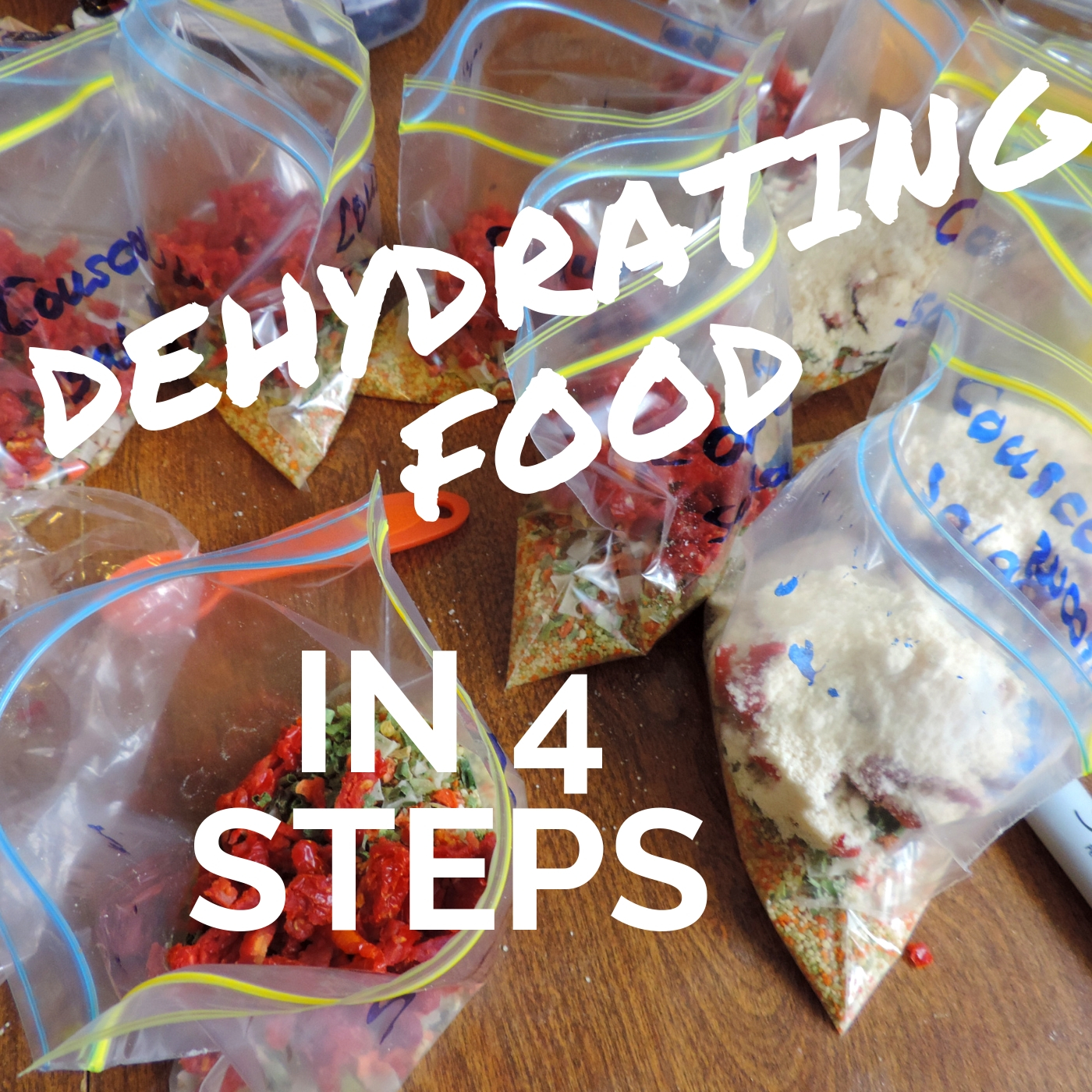“How do you carry a full week’s worth of food in that backpack?” was I asked.
“Simple, I dehydrate delicious meals which weight less.” I answered back.
Dehydrating is the key to multi-day trekking. Read about my preparation for long adventures here. Even on day hikes I will bring some jerky, which is by the way ten times better, healthier and cheaper than store bought ones. Plus there’s nothing that beats home-made fruit leather or dried fruits. It taste just like candies. The beauty of dehydrating food yourself is that you can make anything from full meals to snacks of any flavors by removing the moisture. Meaning that it will preserve longer and be lighter to carry. Without further due here are my 4 easy steps to dehydrating food.
Step 1 Finding the products for dehydrating
- Clearance items from the grocery store or market
- In the fall there are often more fruits and vegetables than you can eat in the garden so dehydrate the extra
- Any left overs
Step 2 Preparing the food before dehydrating
- Cut fruits in very thin and even slices (faster dehydration time).
- Puree fruits together to make a tasty fruit leather.
- Cook a big batch of chili or other stew.
Step 3 Dehydrating time
- For sauce or fruit leathers place them over some plastic wrap or a tray that holds liquid which is designed to be placed into the dehydrator. Then spread evenly.
- NEVER block the center and edges of the dehydrator with plastic wrap as it would prevent heat flow.
- Fruits and jerky can be placed directly onto the tray. But don’t pack them too tight.
Step 4 Is it ready yet?
- You can rotate the trays every few hours. Since the heat rises the bottom tray will be ready faster so I put it on top.
- Touch and feel the food to see if the moisture is gone. You want a rubbery texture.
- Don’t over dehydrate meals to the point of being brittle and breaking. Then it would be impossible to re hydrate.
- READ your dehydrator’s manual. Since different types and size of food will require various dehydration times it is important to adjust the temperature to the right setting if possible.

There are many food dehydrators of various price range on the market. Choose the one that will fit your needs and budget. I have used a cheap $40 one without any temperature setting which lasted almost a decade of intensive use until it melted. Unfortunately I forgot the brand name. And now I have a better quality one from Nesco with temperature settings which works great as well as one purchased for $3 at a yard sale. So what are you waiting for, start dehydrating your very own delicacies.
Live Wildly Intrepid!
Carpe Diem
Alex






